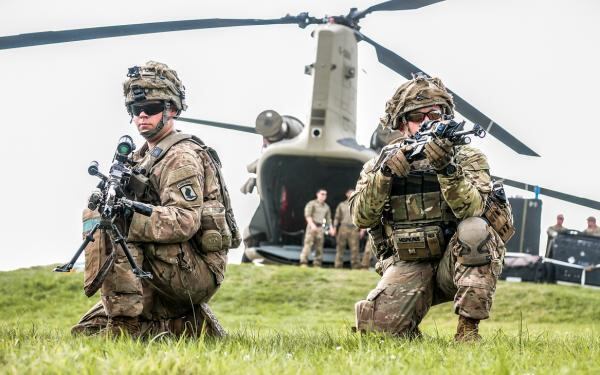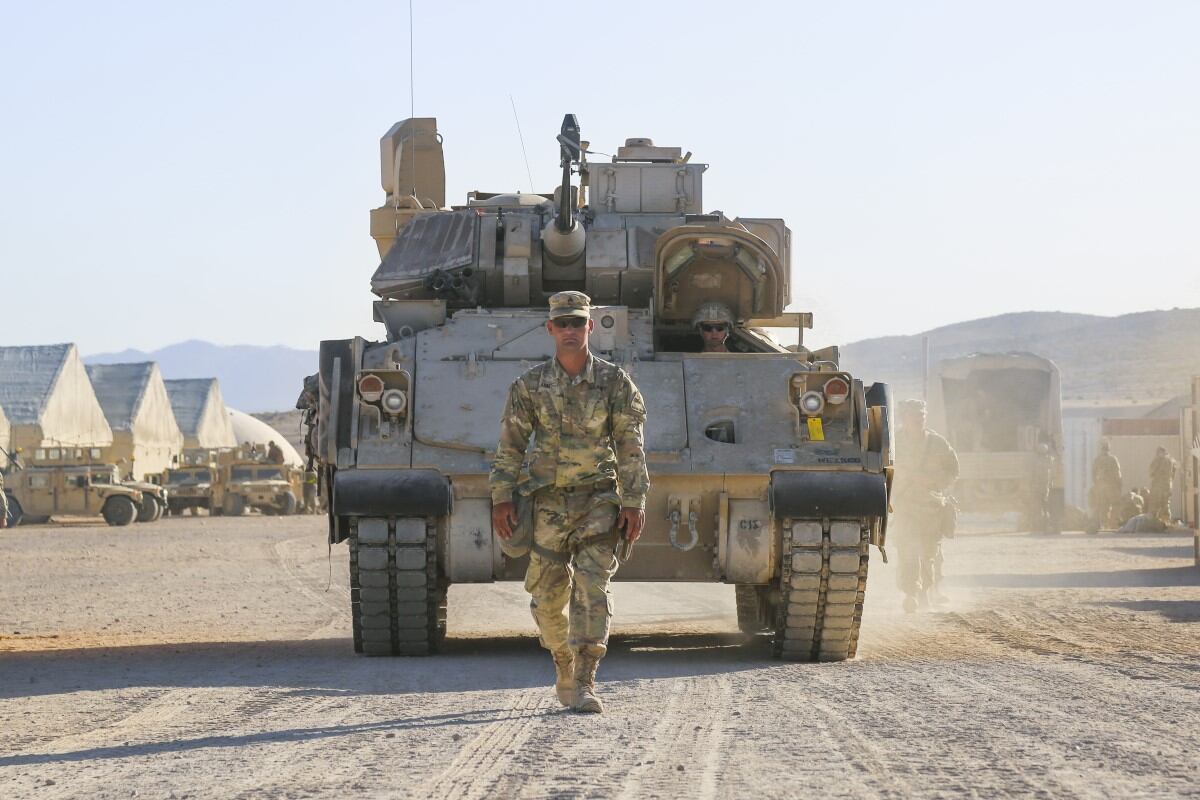Update: This story has been updated to reflect correct procurement numbers for the Armored Multipurpose Vehicle (AMPV).
WASHINGTON — The U.S. Army has telegraphed its plans to terminate 93 programs and truncate another 93 to make room for next-generation technology under ambitious and rapid modernization plans, and the first major programs to feel the ax blows in the next five years are vehicles in the current fleet.
According to fiscal 2020 budget request documents released March 12, the service plans to cut back on upgrade plans for its Bradley Fighting Vehicle program, an aging platform in the fleet currently unable to effectively support technology like active protection systems.
RELATED

But the Army is also planning to cut not-so-legacy systems as well — the Armored Multipurpose Vehicle (AMPV) built by BAE Systems and the Oshkosh-manufactured Joint Light Tactical Vehicle (JLTV) — that recently replaced legacy systems, Army Comptroller Lt. Gen. Thomas Horlander said during a March 12 budget briefing with reporters at the Pentagon.
The service has not reached a full-rate production decision for the JLTV. That was pushed back from December 2018 to May 2019 due to new plans to alter the vehicles — to include larger windows and the addition of a muffler — based on soldier feedback.
And the first prototype for AMPV — the M113 personnel carrier replacement — rolled off the line in 2016.
The budget documents lay out the Army’s FY20 plans to cut Bradley A4 upgrade plans from 167 vehicles to 128.
The plan is to procure five more sets of Bradley A4 vehicles with one going to pre-positioned stock in Europe and the other four replacing the oldest sets of Bradleys. Then the program will stop around 2023 to make way for the Next-Generation Combat Vehicle, or NGCV, according to Lt. Gen. James Pasquarette, the Army’s G-8 chief.
Although the Bradley will be curtailed, Pasquarette noted that its funding in FY20 was up 37 percent from last year at $639 million.
While the Army — as of last year — planned to buy 3,035 JLTVs, it now plans to purchase just 2,530 of the vehicles in FY20.
Army Under Secretary Ryan McCarthy told an audience at the McAleese & Associates and Credit Suisse Defense Programs conference in Washington on Wednesday that the service would stop at five brigades of Bradley A4 vehicles. That decision, he said, would sync with an investment increase for the NGCV expected in 2023 and beyond.
RELATED

And while the Army plans to decrease JLTV buys in 2020, cuts will likely not stop there.
McCarthy said the Army is looking to lower the requirement for JLTVs and could soon be locking in a new top-line requirement number.
Yet, Pasquarette also said at the McAleese conference that the top-line requirement would not change for the JLTV but would just be pushed to the right.
McCarthy added that cutting the fleet of JLTVs was justified because the Army has a wealth of vehicles, from 55,000 Humvees, and 49,000 more JLTVs and another 800 Infantry Squad Vehicles planned.
“We clearly have more capability than we need,” he said.
The AMPV buy holds steady in FY20 at 131 vehicles. The FY19 plan shows the Army wanted to buy 130 vehicles. The five-year plan has yet to be released by the Army, but it’s likely to show a decline in AMPV buys following FY20.
Pasquarette said the AMPV top-line requirement remains unchanged, but the service was simply slowing the procurement rate per year.
The cuts to current programs were made following painstaking deliberations among Army leadership over the course of last year in a forum dubbed “night court.” Through the process, the service measured current capability against its contribution to increasing capability in a modern, more lethal Army, and it terminated or truncated programs that didn’t fit the bill.
Pasquarette noted that the programs that were fully terminated were small ones that did not contribute to the lethality of the future force. Some of the bigger programs were slowed such as the vehicle programs.
Overall, the Army moved an additional $3.6 billion into modernization funding accounts in FY20 over last year’s levels — planning to spend $8.6 billion on programs that get after a more modern force. And across the five-year budget plan, the service moved an additional $32 billion to fund modernization efforts beyond what was planned in FY19 for a total of $57 billion.
The Army isn’t cutting or slowing all of its legacy vehicle systems, Pasquarette noted.
The Stryker Double V-Hull (DVH-configuration combat vehicles) will get $550 million per year over the next five years to outfit a half of a Stryker brigade combat team annually.
The Abrams tank will receive $1.7 billion in FY20 funding, a 64 percent increase over last year, Pasquarette added.
Jen Judson is an award-winning journalist covering land warfare for Defense News. She has also worked for Politico and Inside Defense. She holds a Master of Science degree in journalism from Boston University and a Bachelor of Arts degree from Kenyon College.






